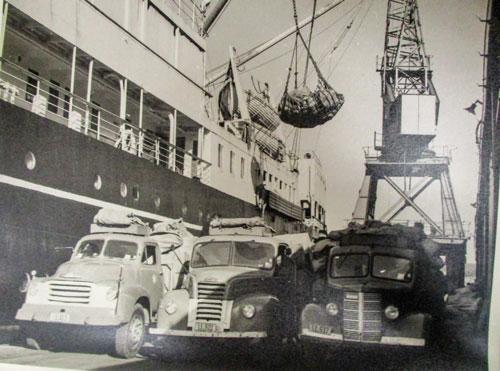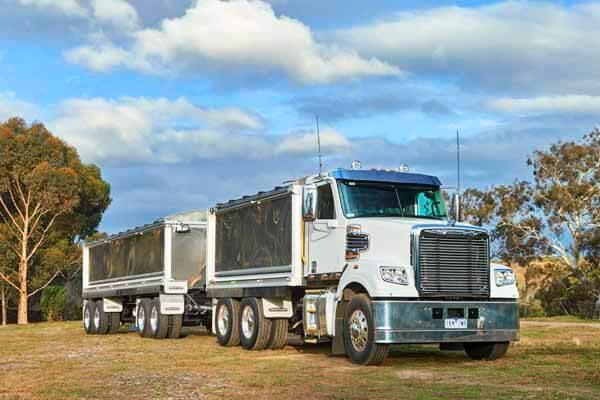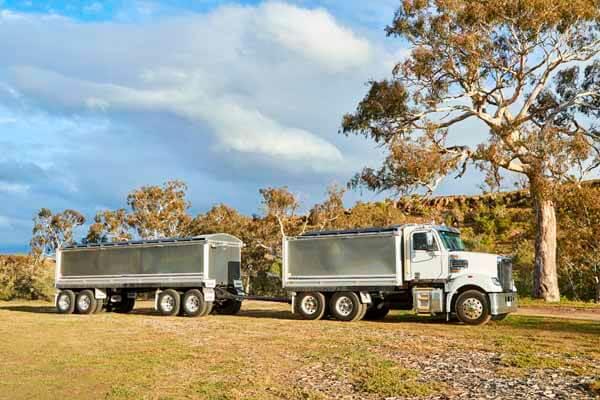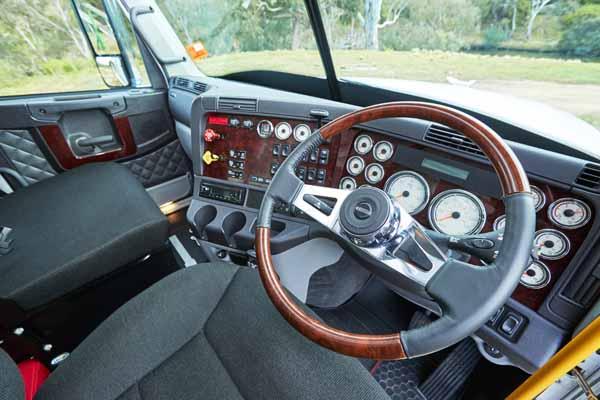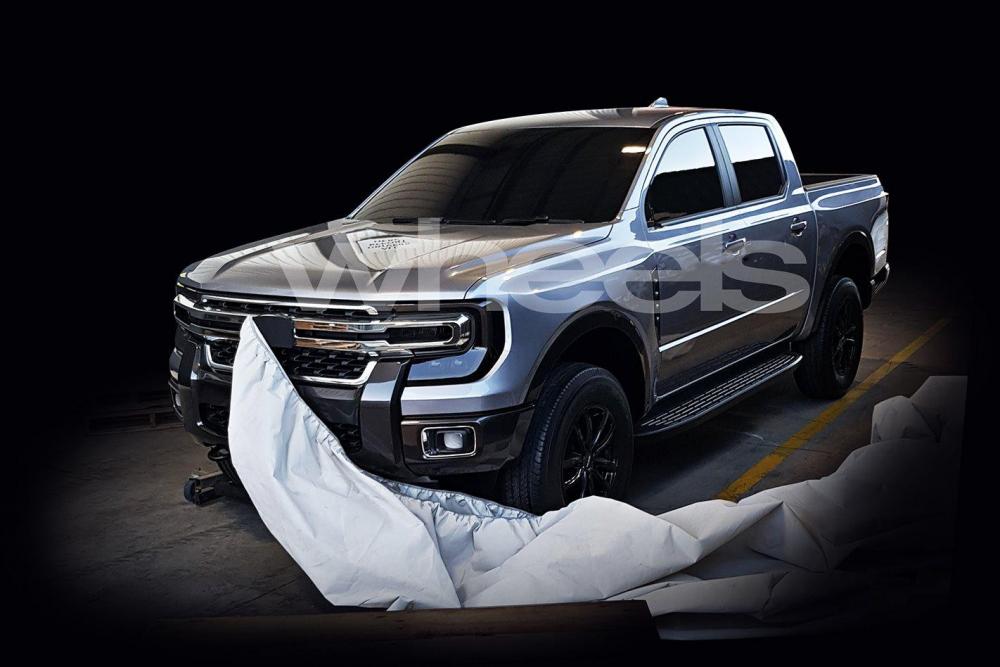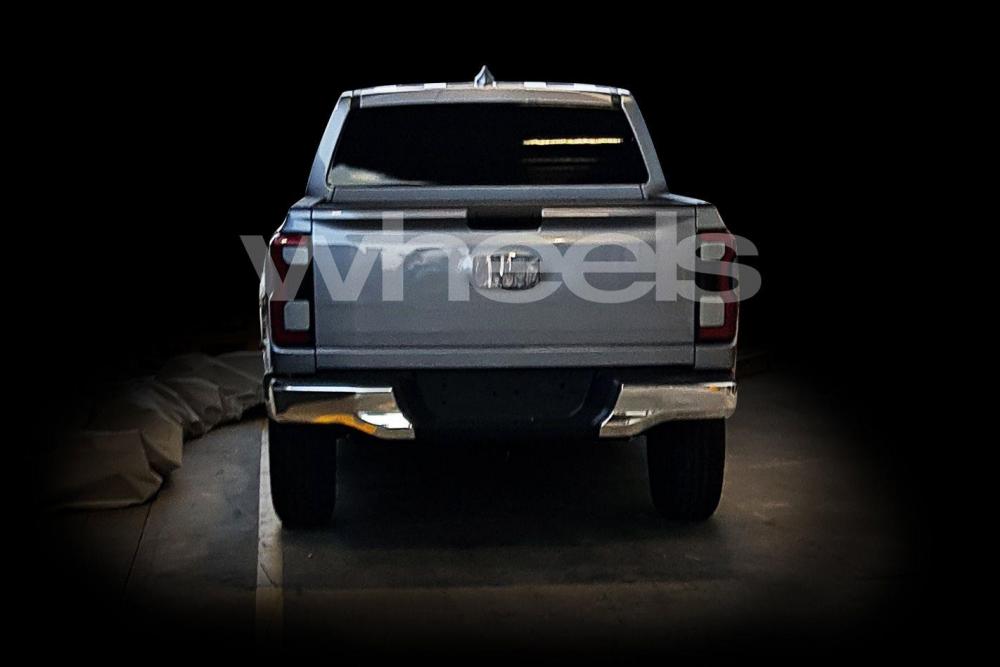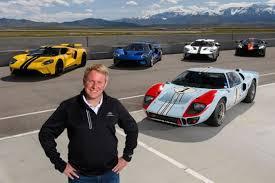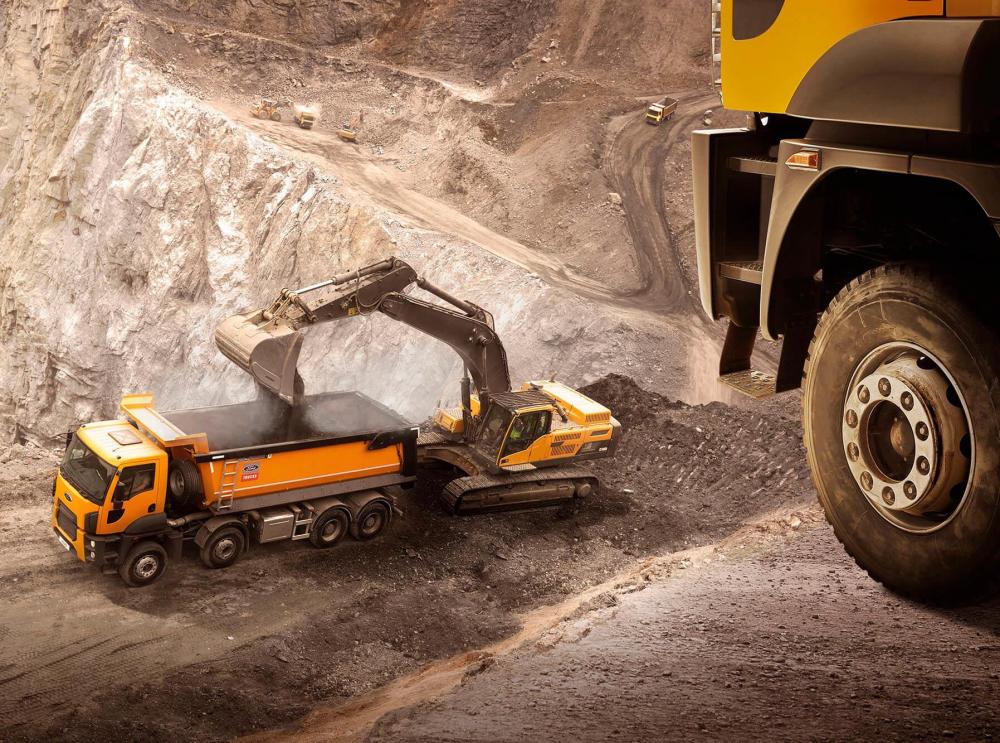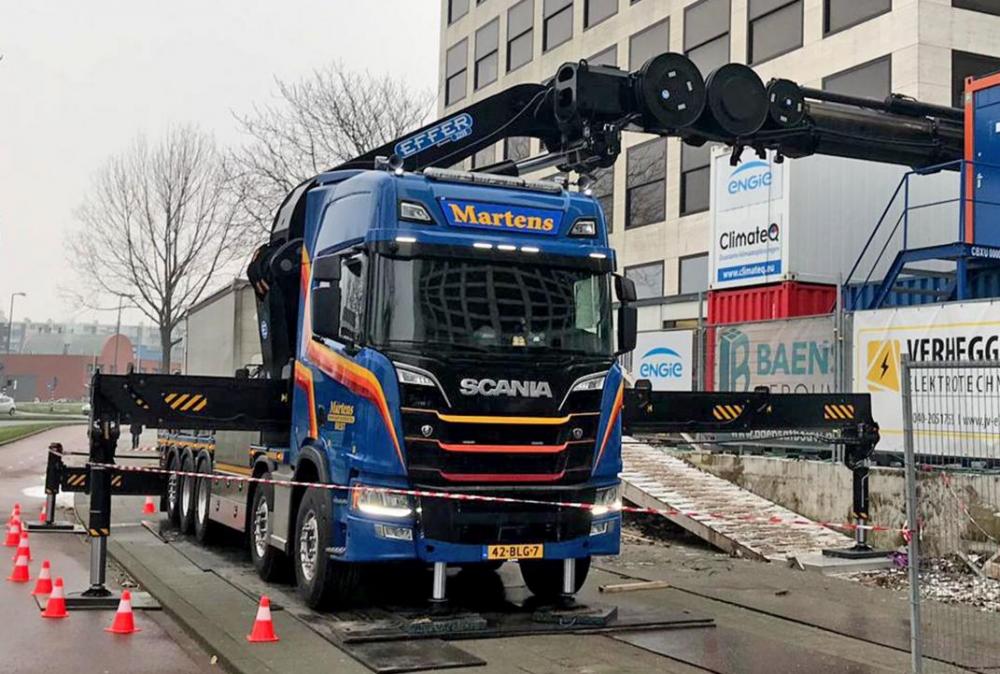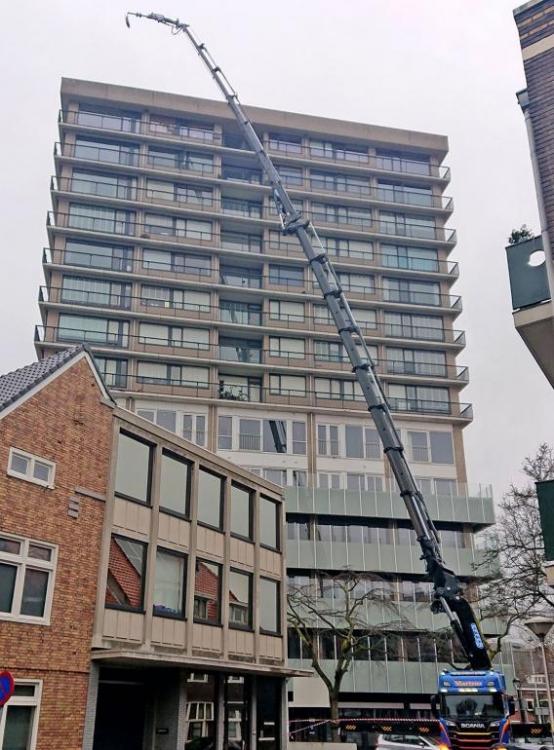
kscarbel2
Moderator-
Posts
18,905 -
Joined
-
Days Won
114
Content Type
Profiles
Forums
Gallery
Events
Blogs
BMT Wiki
Collections
Store
Everything posted by kscarbel2
-
Great footage.......beautiful facility. .
-
'B' ute ee full
kscarbel2 replied to Swishy's topic in Antique and Classic Mack Trucks General Discussion
Right-hand drive.......try it, you'll like it. -
mack medium duty trucks
kscarbel2 replied to jettertrucks's topic in Modern Mack Truck General Discussion
Let's say that I wanted to launch a new Class 6 or Class 7. I myself would choose Class 6 over Class 7, or Class 6 accompanied by a sister Class 7 version (e.g. F-650/F-750), because the non-CDL Class 6 segment is where the volume is, and I can only make money via decent volumes (economy of scale). Now let's reflect on the past.....Mid-Liner. The bulk of sales were non-CDL MS200P rigids (air-over hydraulic brakes) and MS250P rigids (full air brakes). Fast forward to the present with, for example Ford. The F-650 outsells the F-750, what Bob, nearly 10 to 1? And will Volvo offer a gasoline engine option in this Class 7? Reasonable question. After all, North American customers are asking for a gas option. Even Fuso is offering a GM (6.0L) gasoline engine. Ford's new purpose-designed 7.3L gasoline truck engine is here, and the Silverado/Navistar CV is about to land a gasoline engine. -
mack medium duty trucks
kscarbel2 replied to jettertrucks's topic in Modern Mack Truck General Discussion
I believe you. That said, my understanding is the Mack brand is getting a medium truck. Hmm. You’re right, the MHD is too expensive....the dealers can’t sell them. -
mack medium duty trucks
kscarbel2 replied to jettertrucks's topic in Modern Mack Truck General Discussion
My understanding is, under 26 U.S. Code § 4501, the truckmaker pays 12% tax on the first imported truck (CBU - completely built unit), and then the distributors (dealers) pay a 12% tax on each truck they sell. However, there is an exclusion for truck chassis with GVMs of 33,000lb or less. In the Mid-LIner days, we imported CBUs which arrived via the Port of Wilmington, Delaware. Penske and Ryder truck rentals loved them, and their trade-ins created a terrific second-hand truck market. -
mack medium duty trucks
kscarbel2 replied to jettertrucks's topic in Modern Mack Truck General Discussion
The Mack Mid-Liner was a fantastic product for both Mack Trucks Inc. and its distributor network. Period. What I'm saying is the North American playing field has entirely changed from year 1979 to today year 2019. It's so full with brands and product, particularly due to new models over the last couple years, supply exceeds demand. As a result, profitability is evaporating as go after sales. RVi does build a good truck (Range D, ect.). But Volvo might hesitate to offer a new U.S. medium with the same DAF-built cab as the DAF LF sold by Kenworth and Peterbilt as the K270/K370 and Model 220. Volvo could set itself apart with a UD cab, it would have a lower cost basis over an RVI KD kit, and as you said UD needs the business (or else admit failure and close the doors). And as much as I like Renault, the Range D's front fascia is unattractive. https://www.kenworth.com/trucks/k270-k370/ https://www.peterbilt.com/trucks/medium-duty/model-220 . -
Is Volvo Good Or Bad For Mack Trucks?
kscarbel2 replied to Barry's topic in Modern Mack Truck General Discussion
Which takes me back to my first post in 2010............ https://www.bigmacktrucks.com/topic/2094-is-volvo-good-or-bad-for-mack-trucks/?page=7&tab=comments#comment-53474 -
New Zealand Trucking / February 2019 It’s in the bag From the early days until the late 1980s, mail was traditionally carried in canvas bags. Between towns and cities, the mail was moved by trains that sometimes included a Railway Traveling Post Office, the last of which was withdrawn in 1971. Mail would often be picked up, sorted and dropped off en-route, sometimes without the train slowing down or stopping. A loophole in the transport licensing rules at the time allowed for licensed bus services to also carry freight on scheduled routes; this saw a uniquely New Zealand-designed bus that could carry goods at the back and passengers in the front; the composite. Ironically it was the Railways that operated many composite buses. Mail to and from overseas was also moved in canvas bags. Photo: This picture shows three classic flat deck trucks of the 1950s and 1960s alongside the MV Wanganella in Wellington. Left to right they are: Bedford A, Ford Thames ET6 (Costcutter), and a Bedford OLB. From the ship’s side the mail would be taken to the Overseas Mail Branch for sorting and distribution around the country by rail or composite bus. .
-
Power Torque Magazine / February 2019 Named after a series of 11 operations conducted by the American Forces in the Vietnam War, the Freightliner Coronado is a worthwhile member of any team – Words by Brenton O’Connor, Images by Geoff Parrington. The tipper and dog market is booming, especially in NSW and Western Sydney, so the invitation from Daimler Truck and Bus to drive its new tipper demonstrator was an opportunity not to be missed. The truck in question was a Freightliner Coronado 114 day cabin, fitted with a Hercules alloy body and hooked up to a Hercules alloy quad dog trailer combination. This had been setup to run as a conventional 50.5 tonnes, 19-metre truck and dog (as the set forward front axle of the Coronado 114 meets the infamous ‘bridge formula’ for extreme axle spacing). Alternatively, the truck can be used as a level two HML/PBS (on approved routes) that allows a gross combination mass of up to 57.5 tonnes. A lot has been done to the Coronado to help with weight distribution due to the extreme forward steer axle location on this truck, and driving these changes has been Michael Egan, senior manager of Freightliner fleet sales. Michael was on hand to explain the key changes and modifications Freightliner has made to create a better spec, and particularly to help with weight distribution. The front axle on the 114 Coronado is mounted only 756 mm from the bumper to the centre of the steer axle, and, to put that in perspective, the Western Star 4800 is 872 mm and the Kenworth SAR is 870 mm. This extreme forward axle spacing has created weight distribution issues for Freightliner, particularly in rigid tipper applications. Typically, the wheelbase of choice for Coronado 114 tippers has been 5300 mm; however, the truck tested was some 500 mm shorter at 4800 mm, fitted with a decent length 4.3-metre body. To accomplish these dimensions Freightliner Australia has made a number of changes to the truck and equipment. The most significant is the exhaust routing, with the exhaust system modified so that the exhaust gas comes directly out of the DPF filter and straight onto the ground, resulting in the removal of the dual stainless-steel stacks normally fitted up each side of the cabin. The reasoning behind this is to be able to move the tipper body right up to the back of the cabin in order to push weight forward onto the steer axle, removing the substantial gap between the cabin and the body where the exhaust system and dual stacks were typically routed. The next major change has been the fuel tank design and location. Typically, the tipper spec will come with three round tanks – two for fuel and one for hydraulic oil. However, the Coronado as tested was fitted with two short and deep square fuel tanks incorporating integrated steps, that were fitted as far forward as possible to again help get weight forward. The left-hand fuel tank had been split to give 200 litres of hydraulic oil, and, as such, the truck has a total fuel capacity of 630 litres, which should be plenty for most applications. The only downside of these tanks is that they no longer provide the same ease of access to the cabin as experienced with round tanks when fitted with big wide steps across their full width. A further possible concern is their close proximity to the ground, opening up the possibility of damage if going off-road into construction sites to deliver bulk materials. Another change has been the fitment of the batteries in cabin, rather than on the left-hand-side of the chassis. The batteries have been fitted underneath the passenger seat to further help move weight forward. Freightliner Australia has also fitted a number of yellow grab handles to make access in and out of the cabin easier, an attention to detail that will appeal to purchasing officers in large fleets who are safety conscious. The only engine offering on the Coronado 114 is Detroit’s DD15, available in a range of horsepower and torque settings. In this application it was set at 500 hp and 1850 lb-ft of torque. For those wanting extra power it’s upgradeable to a maximum horsepower rating of 560 hp with torque staying the same at 1850 lb-ft. The DD15 is one of the few engines running a combined EGR and DPF system (rather than SCR) in order to meet its emission obligations, and, whilst to many readers that will be off-putting, it really shouldn’t be. The DD15 was an engine designed to run EGR from its design phase and not a tack-on to an already existing engine that was never designed from the outset to host EGR. So confident is Detroit of its engine’s success, included (as standard) is a five-year/one-million-kilometre warranty and a minimum of 40,000 km service intervals on B-double work that can be extended even further depending on fuel burn and operating conditions. The truck tested was fitted with the optional Eaton UltraShift transmission, providing a full two-pedal operation. Freightliner still has the best gear selection method for trucks running this transmission, with its steering-column-mounted ‘paddle shift’ known as SmartShift making both selecting gears, and also manual upshifting and downshifting, easy. Furthermore, it saves space in the cabin and improves access from the driver’s seat into the sleeper cabin (when fitted). Another nice advantage is the integration of the gear selection into the main display allowing the driver to easily identify the gear selected. Driving the Detroit DD15/Eaton UltraShift package with the loaded combination obviously makes life easy, without needing to operate the clutch or changes gears manually. Like most UltraShift trucks, the transmission is too slow to upshift in the lower gears and requires the driver to manually ‘tap’ the paddle shift to force the transmission to upshift, otherwise the truck revs out to 2100 rpm before it shifts up. On one particular occasion, when leaving the BP truck stop in Epping, the truck wouldn’t shift out of second gear, even though automatic mode was selected, therefore a manual upshift was required to get the transmission to move up through the gears. When it comes to steering feel, the Coronado 114 excels, which could be in part due to the dual steering boxes fitted as standard to the truck. The steering is both light and direct and has excellent road hold. So much so, that the truck drives as if on rails, and, even when dropped off the edge of the bitumen onto the gravel road shoulder, the truck remains composed and is easy to bring back onto the black top. Going on further, the truck handles extremely well, and when cornering the truck feels very composed and inspires confidence into the driver. The downside of the road handling is the ride comfort, particularly from the steer axle. While the firm front springs provide exceptional road handling, they are very firm, and on rough roads the truck is quite rough. The rear suspension is Freightliner’s AirLiner 46K airbag suspension, with a four-bag arrangement. The nature of a four-bag tandem-drive airbag setup doesn’t provide the same level of axle articulation, movement and ride comfort when compared to an eight-bag arrangement. For the test route, a trip was taken from Daimler’s Somerton dealership north up the Hume Highway to Broadford, where the vehicle weight at the checking station recorded a gross combination weight of 46.06 tonnes. From there the route detoured west to Kilmore, then onto Wallan, before returning to the dealership at Somerton. This provided a combination of freeway travel, stop/starts through the towns and also some country highway with less than perfect road conditions, during which the rigid tipper and quad dog combination recorded an average fuel consumption of 1.75 kilometres per litre. Standard equipment on the Freightliner is outstanding, and, unlike other US trucks, one does not need to delve deep into the options list (with additional costs) to get a decent specification. Power mirrors and windows are standard, as is ABS and traction control, along with full cross locks (differential locks), Michelin tyres and Alcoa DURABRITE rims, all of which make the standard truck both comfortable and well equipped for the range of tasks likely to be thrown at it. The Coronado 114 is a good package, and the range of changes instigated by Freightliner Australia has sought to make the vehicle more suitable for tipper and dog work, especially with the explosion of PBS truck and dog combinations witnessed in recent years. Unfortunately, as the truck was not loaded to its legal limit, we weren’t able to ascertain how close to 6.5 tonnes on the steer axle the changes made by Freightliner have achieved; however, the technical drawings done by both Freightliner and Hercules indicate that it should be feasible. .
-
mack medium duty trucks
kscarbel2 replied to jettertrucks's topic in Modern Mack Truck General Discussion
HIno is aggressively growing, and Isuzu has a solid reputation. Hino already reached Class 7, and now has the Class 7/8 XL series. And put the upcoming Class 7/8 Chevrolet/Navistar truck on your calendar (the MV/DuraStar replacement). Isuzu entered Class 6 with the FTR. Chevrolet sells the same truck as the 6500XD, and rebadged versions of the smaller Isuzu's as well. Huge footprint between Isuzu and Chevrolet. And then, for the customers who want a conventional, in addition to Ford and Dodge (Ram), you have Chevrolet and Navistar selling Class 4, 5 and 6 versions of their new conventional bonneted truck. I expect Dodge to add a Class 6 6500 any time now. It's a no-brainer. And though limited to Classes 3, 4 and 5, Fuso is in the game as well. So in Classes 3 thru 6, to say the least, the market is overly crowded with brands and product, meaning the trucks will be discounted in order to move them which kills reasonable profitability. So there's no point in Volvo jumping in the pool now.....it's already too crowded as is. Volvo pulled the plug on Mack medium product in 2003 (and North American UD sales in 2012) and never looked back. Mack brand distributors one-by-one took on one or more Japanese brands and Volvo didn't care. Do you think any Mack brand dealer is going to abandon their Hino or Isuzu franchise for Volvo's endeavor? Not. http://www.hino.com/hino-trucks.html https://www.isuzucv.com/en/isuzutrucks https://www.chevrolet.com/commercial/low-cab-forward-cab-over-truck https://www.mitfuso.com/en-us/models https://www.chevrolet.com/commercial/silverado-chassis-cab https://www.internationaltrucks.com/trucks/cv-series https://www.ford.com/new-commercial-trucks/ https://www.ramtrucks.com/ram-commercial/index.html# -
mack medium duty trucks
kscarbel2 replied to jettertrucks's topic in Modern Mack Truck General Discussion
They're too late to attend a now crowded party. Look at it this way, in the North American market, could they possibly and meaningfully compete in the medium-duty segment? Could they possibly compete with Freughtliner (Daimler) and Navistar in the mid- and high-end medium segment? Could they possibly compete with Ford in the low-end medium segment? The answer is no......so what's the point of such an exercise. Just speaking candidly. -
The global Ford Ranger is good looking no more. Here we appear to see the 2021 Ranger. https://www.whichcar.com.au/news/2021-ford-ranger-is-this-it .
-
Interesting.........Mack Looking For Engineers
kscarbel2 replied to Dirtymilkman's topic in Trucking News
https://www.bigmacktrucks.com/topic/55800-mack-medium-duty-trucks/?tab=comments#comment-416443 -
This "Best of the Monkees" CD is really quite good. https://www.amazon.com/gp/product/B00008V5SD/ref=oh_aui_search_asin_title?ie=UTF8&psc=1
-
mack medium duty trucks
kscarbel2 replied to jettertrucks's topic in Modern Mack Truck General Discussion
Apparently a third party is going to assemble knocked down (KD) truck kits. Based on UD, RVI, Volvo or Dongfeng....I don't know. NRV and Macungie have no capacity, so a third party will assemble. I myself would have called Spartan. I have zero optimism on the product because it's not being handled correctly. With what is now a very crowded market segment, and Mack brand dealers who have long ago all taken on Japanese franchises because Volvo offered them nothing, what's the point? Nobody at Volvo North America has expertise in such an endeavor. They're far too late to come to the party now. -
mack medium duty trucks
kscarbel2 replied to jettertrucks's topic in Modern Mack Truck General Discussion
You mean the upcoming Mack-branded medium trucks, right? -
They give them away........zero percent financing too.
-
What cab do I have ?
kscarbel2 replied to ron12's topic in Antique and Classic Mack Trucks General Discussion
Right click on the picture. Click on "edit" Click on "compress pictures" Click on "compress for documents" Click on okay Then, now smaller, it should upload. -
Be sure to change over to Motul synthetic brake fluid, to avoid the low-use condensation corrosion issue.
-
Henry Ford III joins Ford Foundation board Sherri Welch, Crain’s Detroit Business / February 22, 2019 DETROIT -- To signal its ongoing commitment to Detroit and Michigan, the New York-based Ford Foundation Board of Trustees has named a member of the Ford family to its board for the first time in 43 years. Henry Ford III, 38, manager of corporate strategy at Ford Motor Co., has been elected to a six-year term on the foundation's board. Ford is the great-grandson of Edsel Ford, who created the Ford Foundation in 1936. The younger Ford is the first family member to sit on the foundation's board since his grandfather, Henry Ford II, resigned in 1976 after 33 years of service as president, chair, and a trustee. Henry Ford II created the modern Ford Foundation, guiding it on a deliberate process of becoming independent. Under his leadership, it shifted to an international mission, expanded its board beyond the Ford family and moved to New York City in 1953. Michigan controversy Fast forward to 2006. Then-Michigan Attorney General Mike Cox launched an investigation of the foundation, alleging it had ignored the Ford family's philanthropic wishes by reducing support for Michigan charities. His investigation came amid sizable commitments made by the foundation in Detroit. Between 2005 and 2007, the Ford Foundation committed $2 million to the Detroit Riverfront Conservancy's RiverWalk project, $5 million to the Community Foundation for Southeast Michigan for neighborhood development along the city's east riverfront and $8 million in grants and low-cost loans to ShoreBank Enterprise Detroit to spur new economic development in Detroit. In the spring of 2007, it committed $25 million to the first round of funding to create the New Economy Initative, a $100 million economic development initiative led by foundations. 'Grand bargain' In 2014, under the direction of current President Darren Walker, the foundation stepped up its investments in southeastern Michigan with a $125 million commitment to the "Grand Bargain" that shored up Detroit pension funds, helping the city to emerge from bankruptcy and protecting the collection at the Detroit Institute of Arts. Including the $12.5 million annual payment it makes to fulfill that pledge, it makes more than $30 million in grants in metro Detroit each year. "Henry has been an advocate for these efforts, and I am delighted he will bring his dedication to social justice to his board service," Walker said in a release. "Although we were established to be an independent institution, our recent efforts in southeastern Michigan have marked a reconnection with the Ford family, coming full circle with Henry's election to our board." Re-engagement in Detroit Ford's appointment to the foundation's board builds on other moves the foundation has made to re-engage with Detroit in recent years. In 2015, it held its first meeting in Detroit since 1948, and in 2017 it opened an office in Detroit and named Detroit native Kevin Ryan to manage it as it began focusing on reforming the school system, investing in affordable housing and equitable development and support of neighborhood-based organizations. Prior to joining Ford Motor Co. in 2006, Henry Ford III taught middle school and high school math and history after a role with Boston-based Carney, Sandoe and Associates, recruiting new teachers and helping to place them in schools across the country. He currently serves on the advisory boards of Henry Ford College in Dearborn, Mich., and Bridging Communities in Detroit, The Henry Ford, Operation Hope and Neighborhood Villages, a nonprofit group he helped start to work with community-based organizations to increase the accessibility of early child care for all families. Ford III said in a statement that he's eager and honored to help shepherd the foundation his family created more than 80 years ago. "The foundation's commitment to ending inequality and building a fair and inclusive economy is more critical today than ever before, and it is impossible to overstate its role in reinvigorating the city of Detroit," he said. . .
-
Navistar Press Release / February 21, 2019 Navistar International Corporation today announced that Navistar Canada ULC, its wholly owned subsidiary, on behalf of its pension plans, has purchased group annuity contracts from RBC Life Insurance Company (RBC Insurance) and iA Financial Group that transfer approximately $268 million ($333 million CAD) in obligations, and related assets, of defined benefit pension plans in Canada to these two Canadian insurers. The transactions are aligned with Navistar's strategic priority to strengthen its balance sheet by lowering risk volatility in its pension plan obligations. Under the agreements, the two Canadian insurers will issue annuities covering the responsibility for pension benefits owed to approximately 1,750 Navistar pensioners and beneficiaries, which represents the majority of Navistar's pension plan members in Canada, and will begin administering all benefits to these members beginning on May 1, 2019. Pension benefits for plan participants will not change. Following the transactions, benefits for plan participants are now protected under Assuris, the life insurance compensation association designated under the Insurance Companies Act of Canada, versus prior protection under the Canadian Pension Benefits Guarantee Fund. Plan participants have been sent information packages containing further details. "We're pleased to partner with RBC Insurance and iA Financial Group to secure pension benefits for our Canadian retirees and their beneficiaries," said Walter G. Borst, executive vice president and Chief Financial Officer, Navistar International Corp. "These transactions continue our objective to de-risk the balance sheet and manage future pension obligations, while retirees and their beneficiaries will receive equivalent pension benefits from highly rated insurance companies, who have strong expertise in long-term management of retirement benefits." As a result of the transactions, which were funded by existing plan assets and required no cash contributions to Navistar Canada's pension plans, Navistar reduced its pension plan benefit obligations by approximately 8 percent. Navistar expects to recognize a non-cash pension settlement charge of approximately $142 million ($104 million after-tax) in its fiscal first quarter of 2019 financial results that will be excluded in its non-GAAP results. Going forward, the transactions reduce Navistar's non-operating financial risk and administrative costs.
-
Peterbilt to launch Model 567 Heritage edition in September
kscarbel2 replied to kscarbel2's topic in Trucking News
If it is an indention, and not a reverse reflection, I'm not going to lose any sleep over it. This is a beautiful, well thought out truck. In fact, I'll go so far as to say that it's the best looking truck that Paccar offers. -
Ford Trucks International / February 21, 2019 Rated up to 500 horsepower and 2,500 N.m of torque, the Ford Trucks construction series' proprietary 13 litre Ecotorq big bore engine always delivers on power and strength. Featuring a high powered engine brake, you're always in control with the power of 4,000Nm of braking torque available at your fingertips. Thanks to Ford’s “Smart Brake” management system, it is possible to control Cargo's engine brake and retarder simultaneously for unparalleled braking performance. Ford Trucks and You – "Sharing the Load" At Ford Trucks, we’re serious about trucking. It's why we designed the Ford Trucks construction series from the ground up to meet your needs and expectations. See your authorized Ford heavy truck dealer for details, or visit the global Ford heavy truck website at https://www.fordtrucks.com.tr/tr-en/home .
-
Peterbilt to launch Model 567 Heritage edition in September
kscarbel2 replied to kscarbel2's topic in Trucking News
Umm, perhaps you're looking at the reflection of the brake pedal, resulting from the camera flash. This AMT-equipped truck has no clutch pedal. -
Scania Group Press Release / February 21, 2019 Dutch crane truck specialist Martens Best has recently started operating its spectacular five-axle Scania R 500 with the biggest loader crane mounted on a truck in the Benelux – 57 metres [187 feet]. “Everywhere we go people are impressed,” says Managing Director and co-owner Chiel Martens. The new Effer 2255 with 8-extension in the main boom and an 8-extension in the heavy duty flyjib is the Italian specialised manufacturer’s flagship product with a horizontal outreach of nearly 49 metres. In its maximum configuration, the crane reaches a height of 57 metres. At short length it can lift 30 tonnes, which when fully extended is reduced to 300 kilos. That is sufficient for the types of lifting assignments Martens often carry out. “We especially use the superior height for lifting window frames and building panels,” explains Martens. “With our trucks we can perform jobs in places that are inaccessible to others.” Business started with a cart The all-Scania transport company has eight crane trucks – three five-axle, three four-axle and two three-axle vehicles. Chiel’s grandfather, Jan, started the business in 1958. During mornings, he tended his farm and, in the afternoons, hitched a cart to his horse to transport goods for the farmer’s guild. The transport business took off with more customers and in 1965 he purchased an Opel Blitz with a 2-tonne payload. A few years later, the first of Jan’s three sons Cees Martens, Chiel’s father, joined the company and subsequently his two other sons were also engaged. In the 1970s, Martens acquired its first Scania, which was used to collect milk from dairy farmers. “Scania always delivers” Martens purchased its first crane truck on 1978 while still providing other transport services. But from the year 2000, when the company received its 25-metre crane, this became the sole focus. “We’re well known in the Netherlands and have plenty of work in this segment,” says Martens. “From the start, we’ve been operating Scania trucks and are very satisfied of the product. Scania always delivers what we need and finds a solution for every challenge.” .
BigMackTrucks.com
BigMackTrucks.com is a support forum for antique, classic and modern Mack Trucks! The forum is owned and maintained by Watt's Truck Center, Inc. an independent, full service Mack dealer. The forums are not affiliated with Mack Trucks, Inc.
Our Vendors and Advertisers
Thank you for your support!



